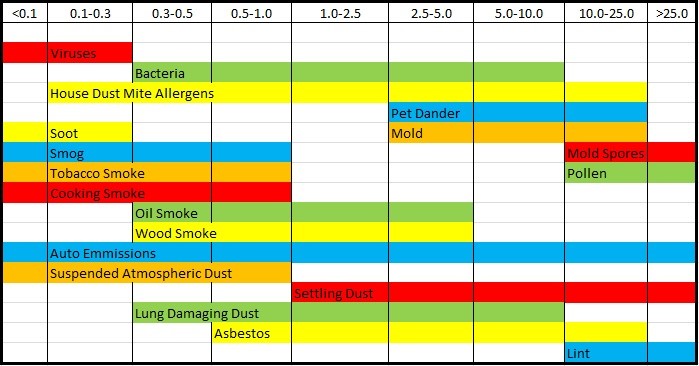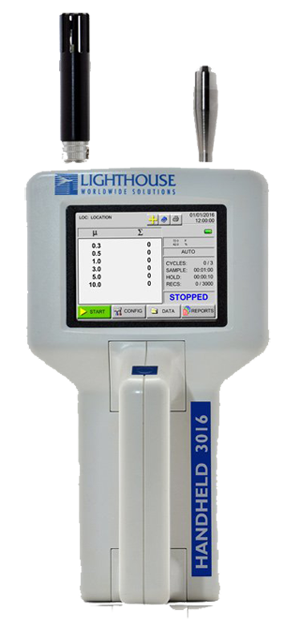Central Florida Particle Counting (Particulate Matter)
Elite Mold Services offers particulate counting to help determine the levels of microscopic debris in the air. Depending on the size of the actual particles, they will either be inhaled deep down into the recesses of someone’s lungs or caught in the upper respiratory tract wreaking havoc there.
Why Measure Particulate Matter (PM)?
PM affects more people than any other pollutant. It consists of a complex mixture of solid and liquid particles of organic and inorganic substances suspended in the air. The particles are often identified according to their aerodynamic diameter, as either PM10 (particles with an aerodynamic diameter smaller than 10 µm) or PM2.5 (aerodynamic diameter smaller than 2.5 µm). The latter are more dangerous since, when inhaled, they may reach the peripheral regions of the bronchioles, and interfere with gas exchange inside the lungs.
Comparing indoor particle counts or particle mass concentration to outdoor counts/concentration provides information regarding the effectiveness of filtration, as well as for the potential that there are indoor sources contributing to airborne particulate matter. Many IAQ investigators have developed experience with elevated particle counts in specific particle size ranges to provide additional clues towards determining the potential sources of these particles. For example, tobacco smoke is known to be in the .01 to 1.0 micron size range, and pollens are typically >10 microns. Here is a simple chart to show common sizing of various particulate:

It is unlikely that one standard or guideline will lead to complete protection to the health effects of particulate matter. Particulates less than 10 µm diameter are the most dangerous because are inhalable and can get deep in to your lungs and even your bloodstream. People that already have heart or lung diseases, children and the elderly are the ones usually affected the most. Due to this, some of the health effects are:
- Increased respiratory symptoms, such as irritation of the airways, coughing, or difficulty breathing; i.e.
- decreased lung capacity
- aggravated asthma
- development of chronic bronchitis
- irregular heart beat
- non-fatal heart attacks
- premature death of people with heart or lung diseases
Establishing a baseline of particulate data to compare to when complaints arise, or when construction is in progress or after changes have been made to an occupied space can provide valuable information to a Facility Manager, Building Owner or IAQ investigator.
In some cases, tracking increasing particulate levels may be used to “bloodhound” a source of airborne particulate. Elevated particulate, in the absence of a known source, may also indicate justification for air sampling, to be sent out for detailed laboratory analysis of the chemical composition of the particles.
What are Typical Sources of Particulate Matter?
Particulate matter is typically brought in from outdoor dust, pollen, smoke, smog and other outdoor sources. Indoor sources may include copier machines, printers, paper dust, environmental tobacco smoke, carpet fibers, upholstery, skin cells, pet dander, dust mite allergens and poorly ventilated combustion processes (fireplaces, kitchen cooking areas, boilers, furnaces, gas heaters, wood stoves, etc).
From outdoor sources; respirable particles that are 2.5-10 µm, and course, inhalable, suspended particles that are 10 -25 µm+, are found near roadways and dusty industries. Fine particles, those that are 2.5 µm and smaller, are usually the result of smoke and haze (forest fires, gases from power plants, industries, and motor vehicles).
Mold spores and fragments are microscopic (2-25 µm) and are naturally present in both indoor and outdoor air. Molds reproduce by means of spores. Some molds have spores that are easily disturbed and waft into the air and settle repeatedly with each disturbance. Other molds have sticky spores that will cling to surfaces and are dislodged by brushing against them or by other direct contact. If the particulate levels are elevated in this mold range, mold sampling can be performed to help determine what type and level of mold is present within the occupied spaces.

Ready To Get Started?
Have Questions? We’re just a click or phone call away!

